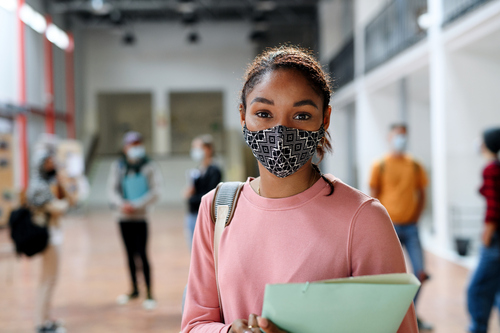Une hausse du coût de la rentrée et de la vie étudiante
Dans son dernier baromètre, la Fédération des associations générales étudiantes (FAGE) constate une augmentation du coût de la rentrée étudiante. Celle-ci coûtera en moyenne 2392 euros à un étudiant non-boursier, soit une hausse de 1,32 % par rapport à 2020. Cela s’explique notamment par la nécessité d’acheter des masques et du gel hydroalcoolique.
La hausse du coût de la vie étudiante est plus flagrante en Île-de-France où l’Union nationale des étudiants de France (UNEF) l’estime à 2,50 % en 2021-2022, soit 247,38 euros de dépenses en plus par an et par étudiant. Une différence principalement liée à la hausse des loyers et aux tarifs des transports. Paris figure ainsi sur la première marche du podium des villes étudiantes les plus chères, suivie de Nanterre et Créteil.
Des offres promotionnelles pour les étudiants dans les banques
Conscientes de cette hausse des frais, les banques profitent de la rentrée scolaire pour faire des offres professionnelles aux étudiants. Dans le climat d’incertitude sanitaire actuel, ils seront probablement nombreux à se tourner vers les établissements bancaires (logement trouvé au dernier moment, frais liés à une rentrée en présentiel…). En ciblant les jeunes et futurs diplômés, ceux-ci s’assurent un fonds de clientèle pour les prochaines années.
Depuis juin, les annonces d’offres de crédit dédiées aux étudiants à taux attractif se multiplient. La Banque Postale propose par exemple une offre de prêt au taux de 0,1 % pour un montant allant de 1000 à 10 000 euros. Pour les montants supérieurs à 50 000 euros, la banque prévoit des taux préférentiels à 0,7 % pour les écoles partenaires, avec une durée de remboursement comprise entre 12 et 120 mois. La Banque Postale est également conventionnée pour le prêt étudiant garanti par l’État pour les jeunes qui ne disposent pas de caution. En lieu et place de la caution personnelle, c’est l’organisme public Bpifrance qui se porte garant pour l’emprunteur à hauteur de 70 % du montant du prêt.
De son côté, la Caisse d’Épargne a lancé une offre de prêt Coup de pouce à 0 % pour un montant de crédit compris entre 500 et 5000 euros. Sans frais de dossier et avec une assurance facultative, l’offre est valable jusqu’au 31 décembre 2021. D’autres banques comme LCL et Banque Populaire proposent des offres de prêt spécialement conçues pour accompagner les jeunes pendant la crise sanitaire.
Ainsi, le marché des étudiants reste très disputé même si la concurrence avec les néobanques est limitée. Parmi les 2,8 millions d’étudiants qui feront leur rentrée cette année, près de 10 % d’entre eux devraient avoir recours à un prêt, estiment les experts.
